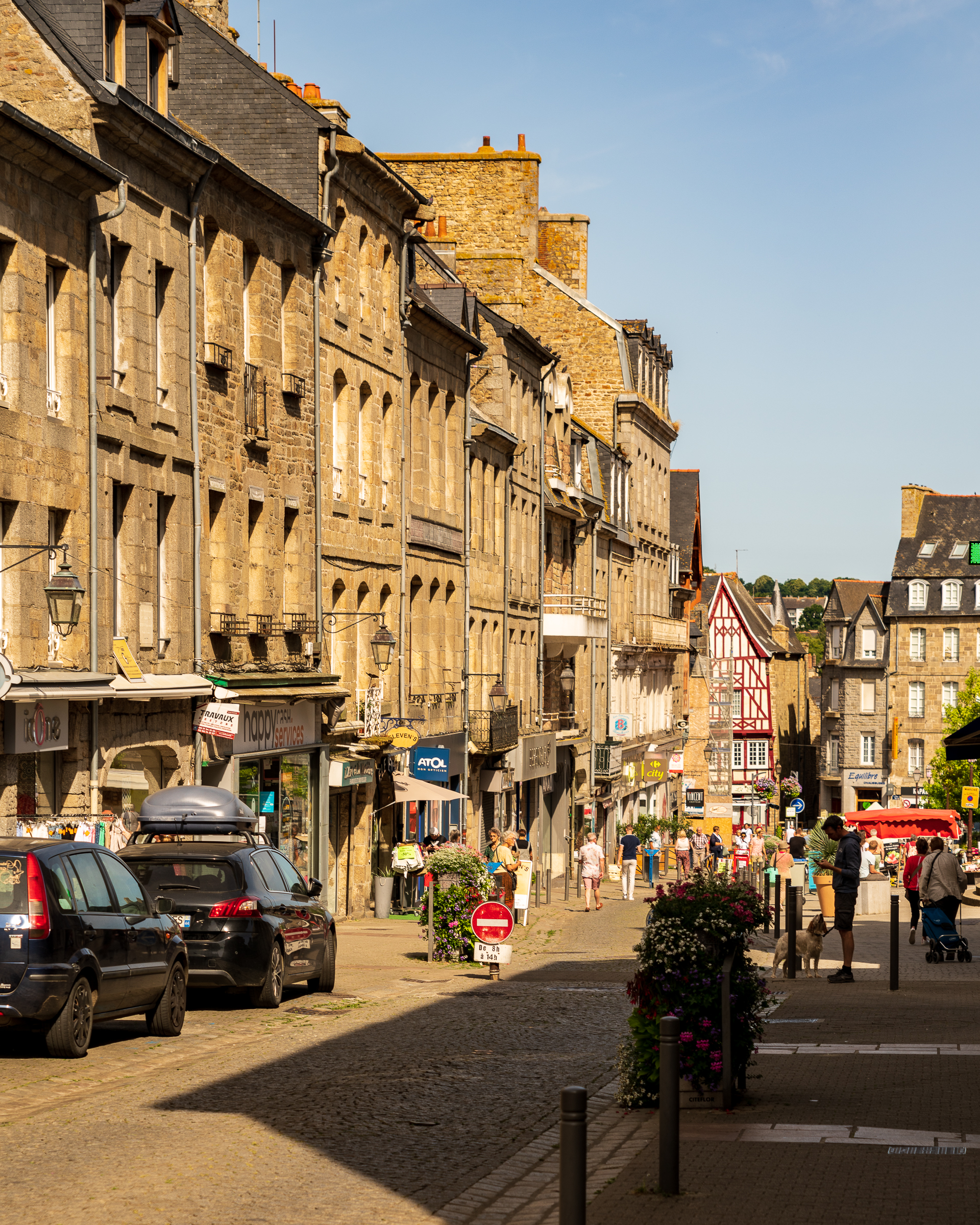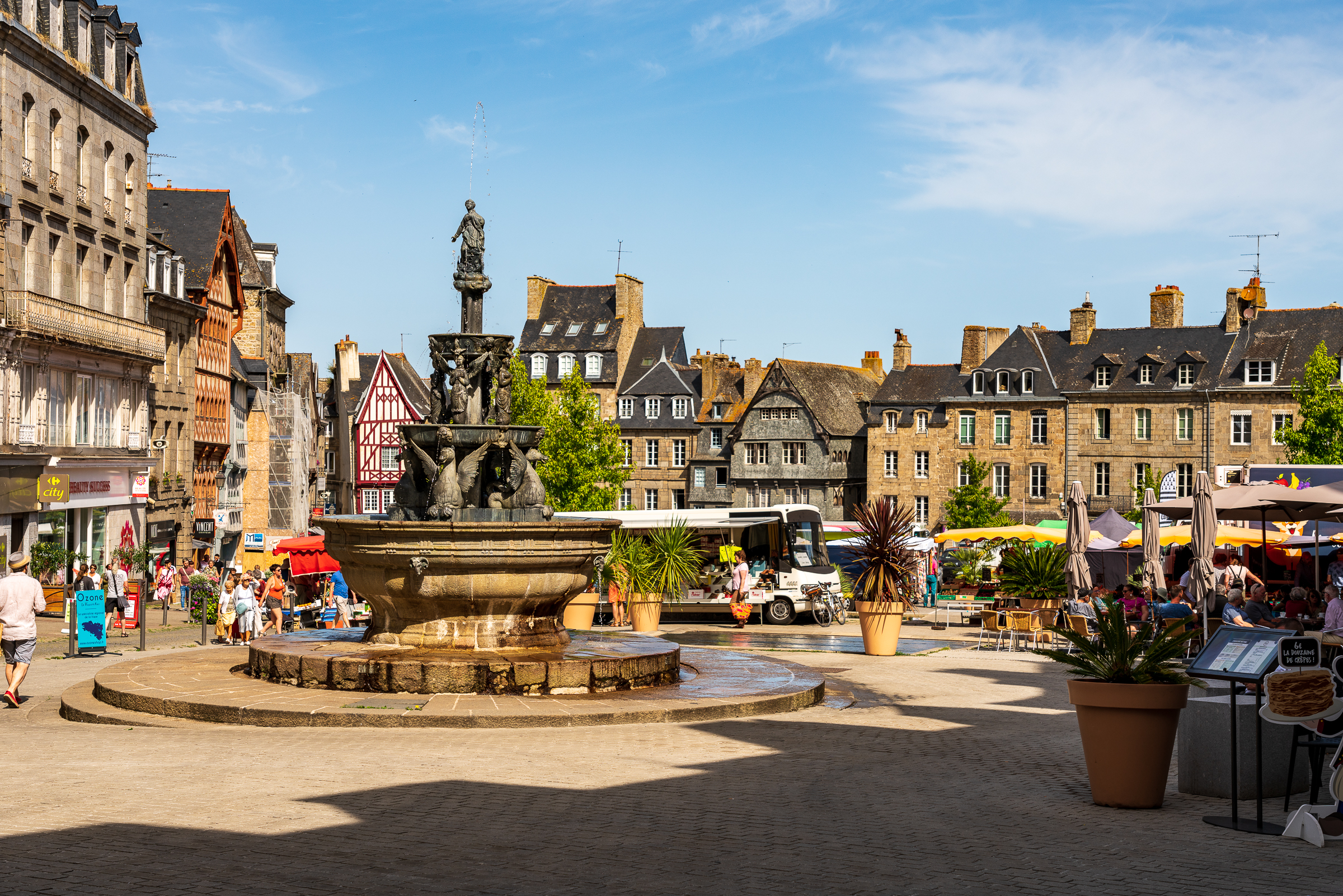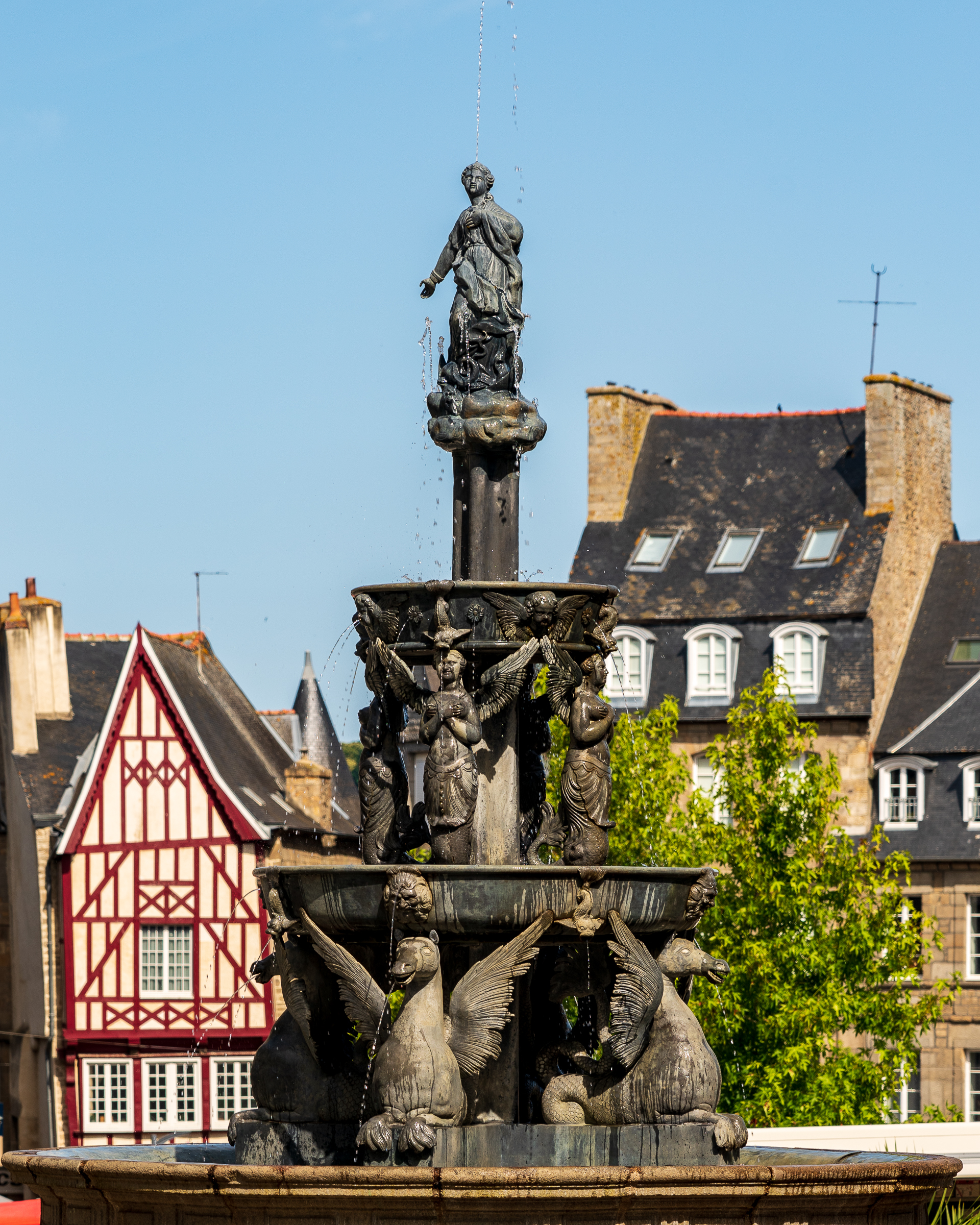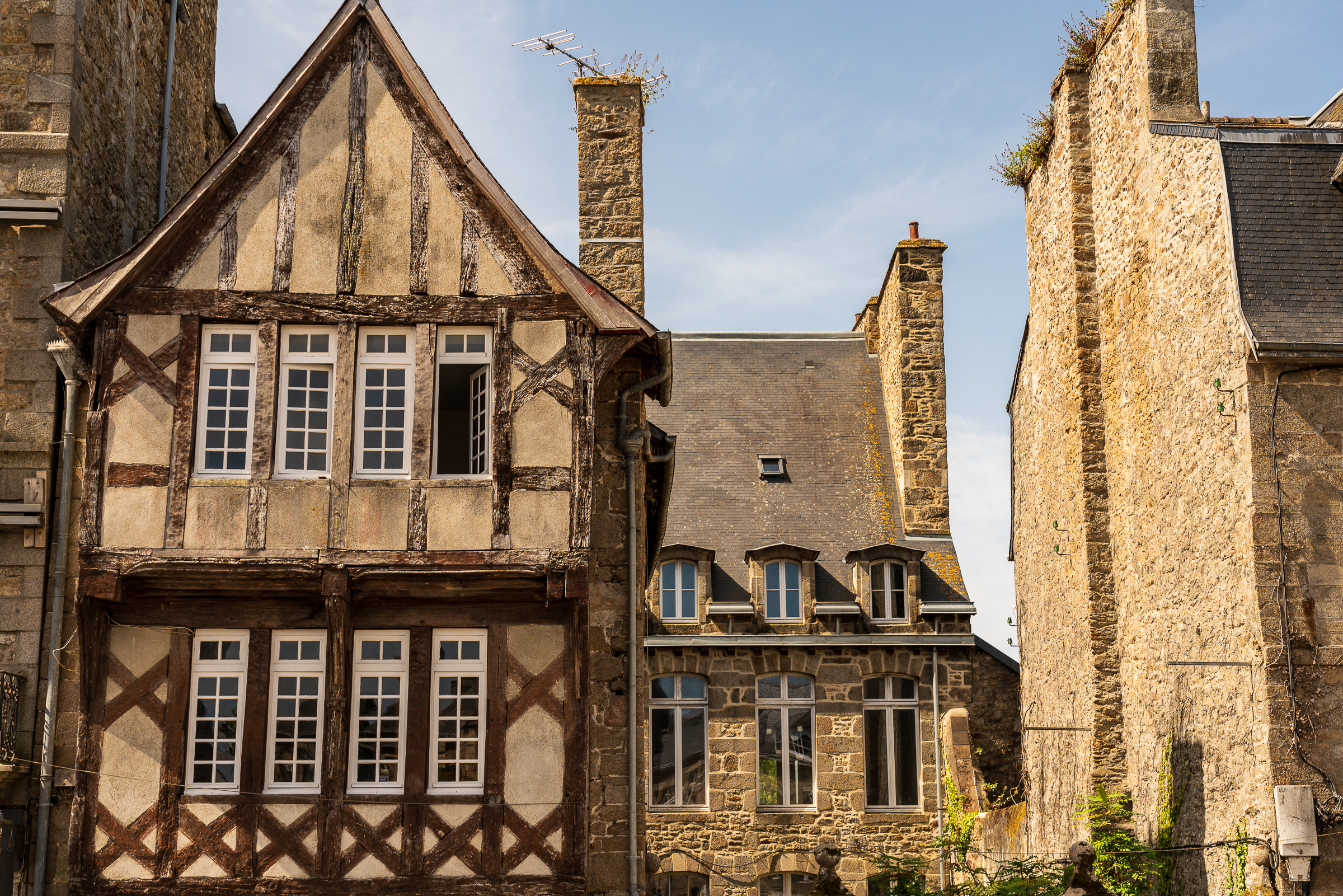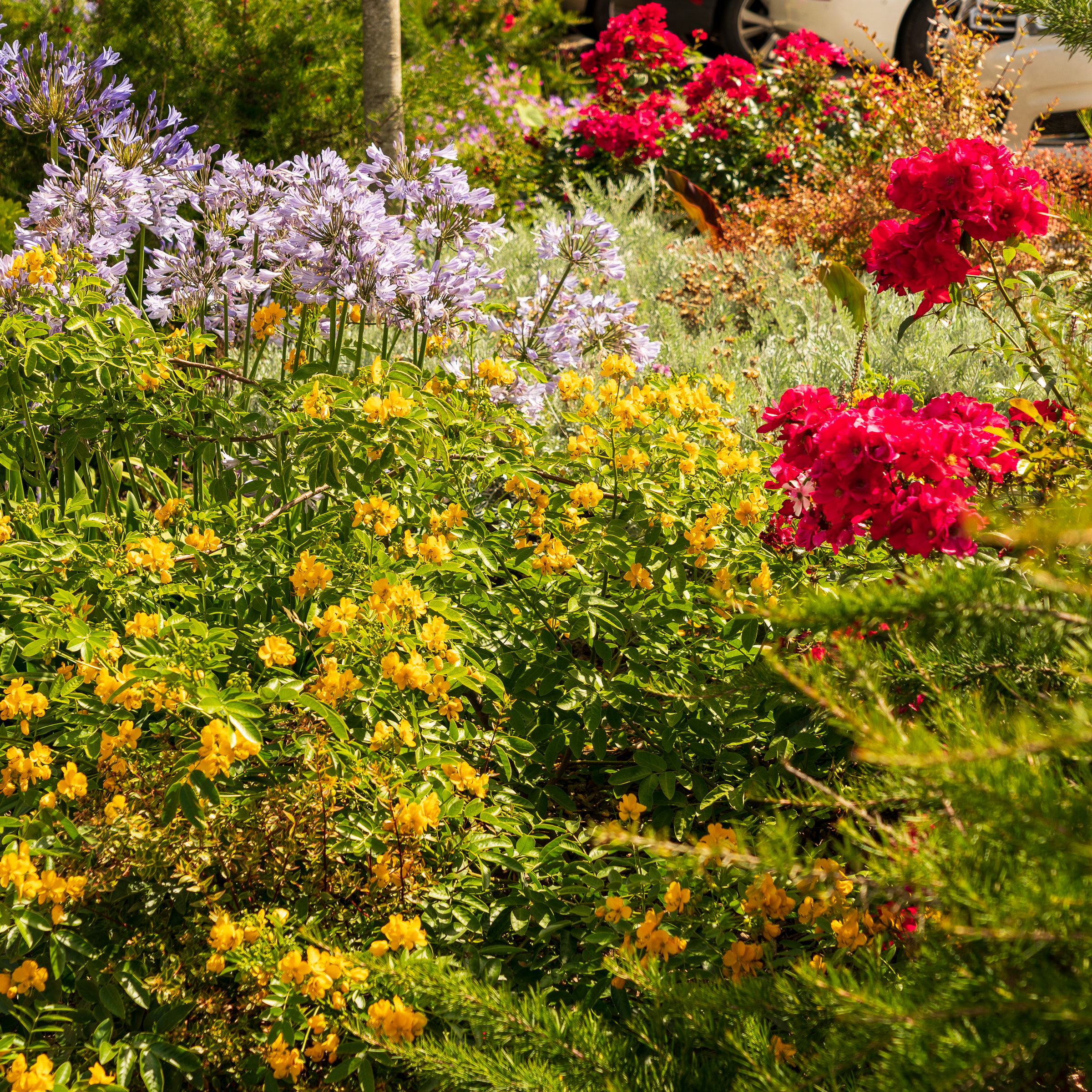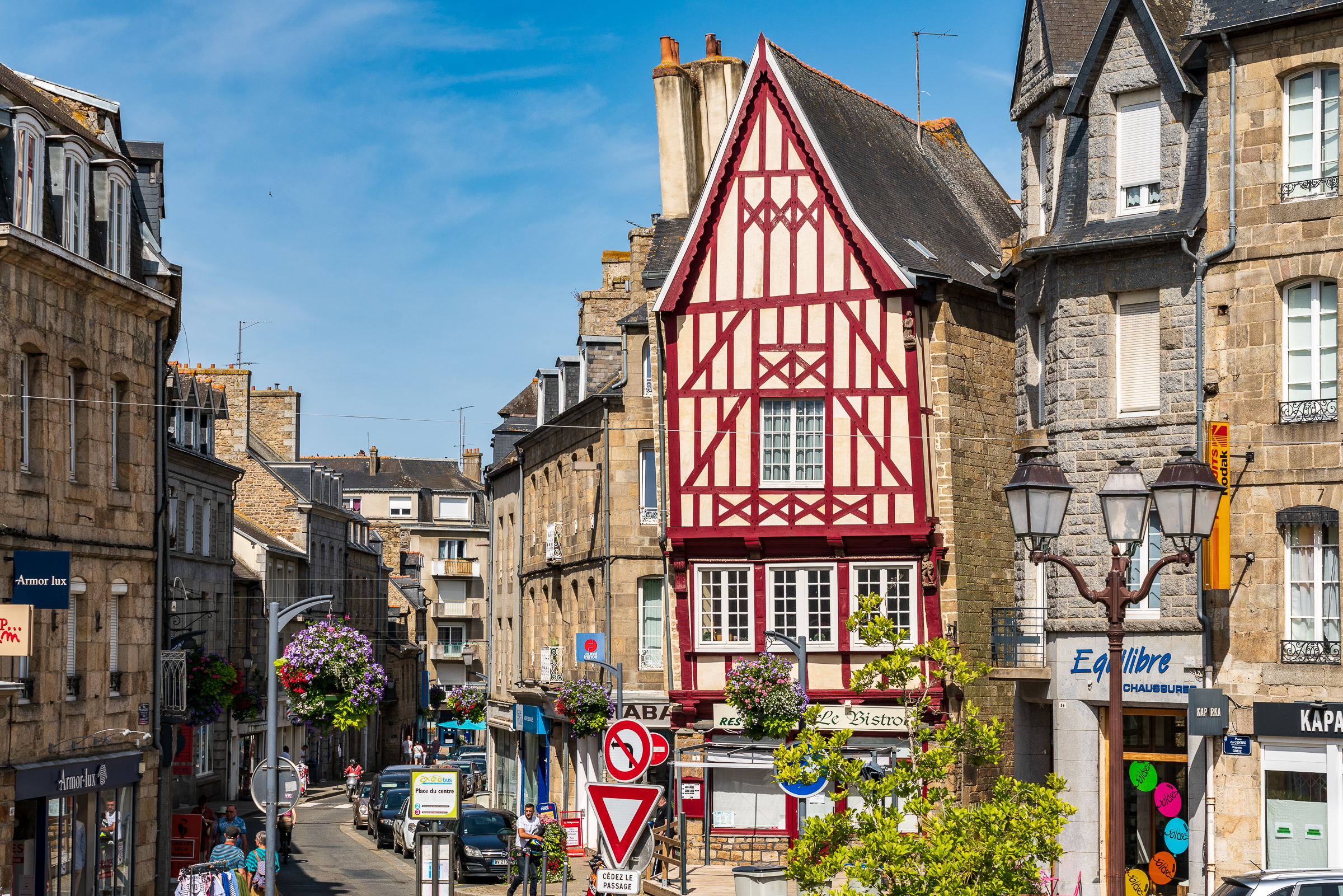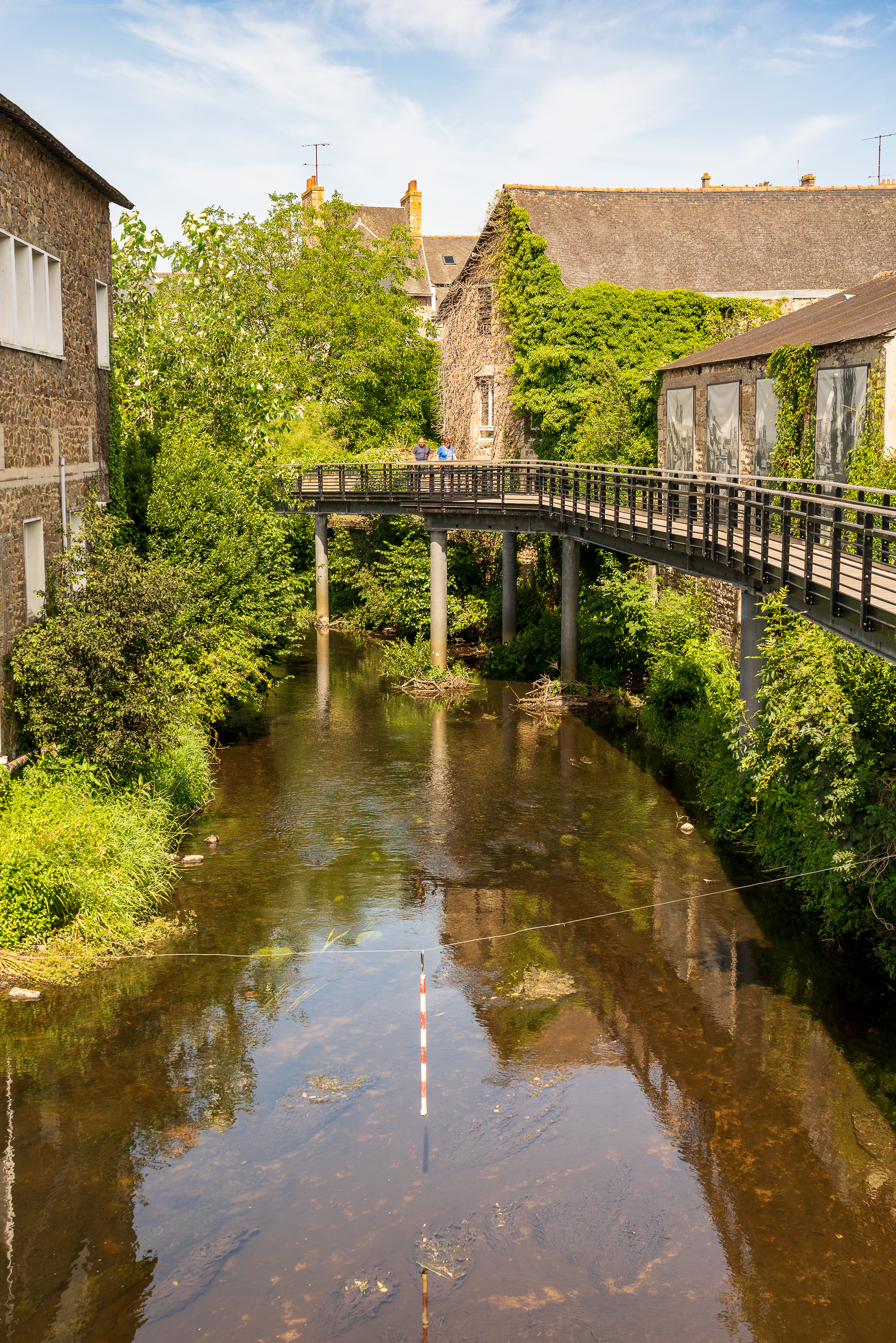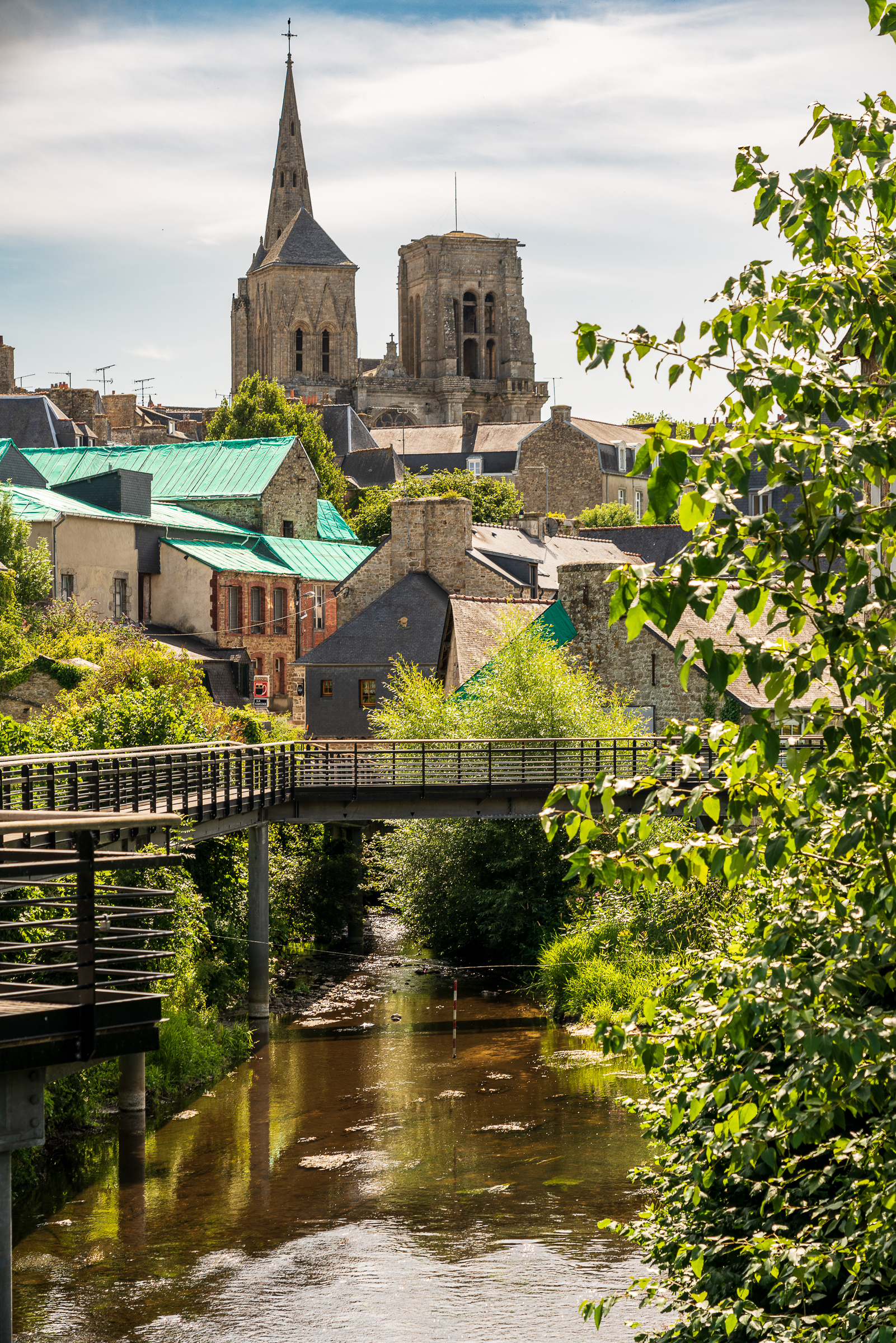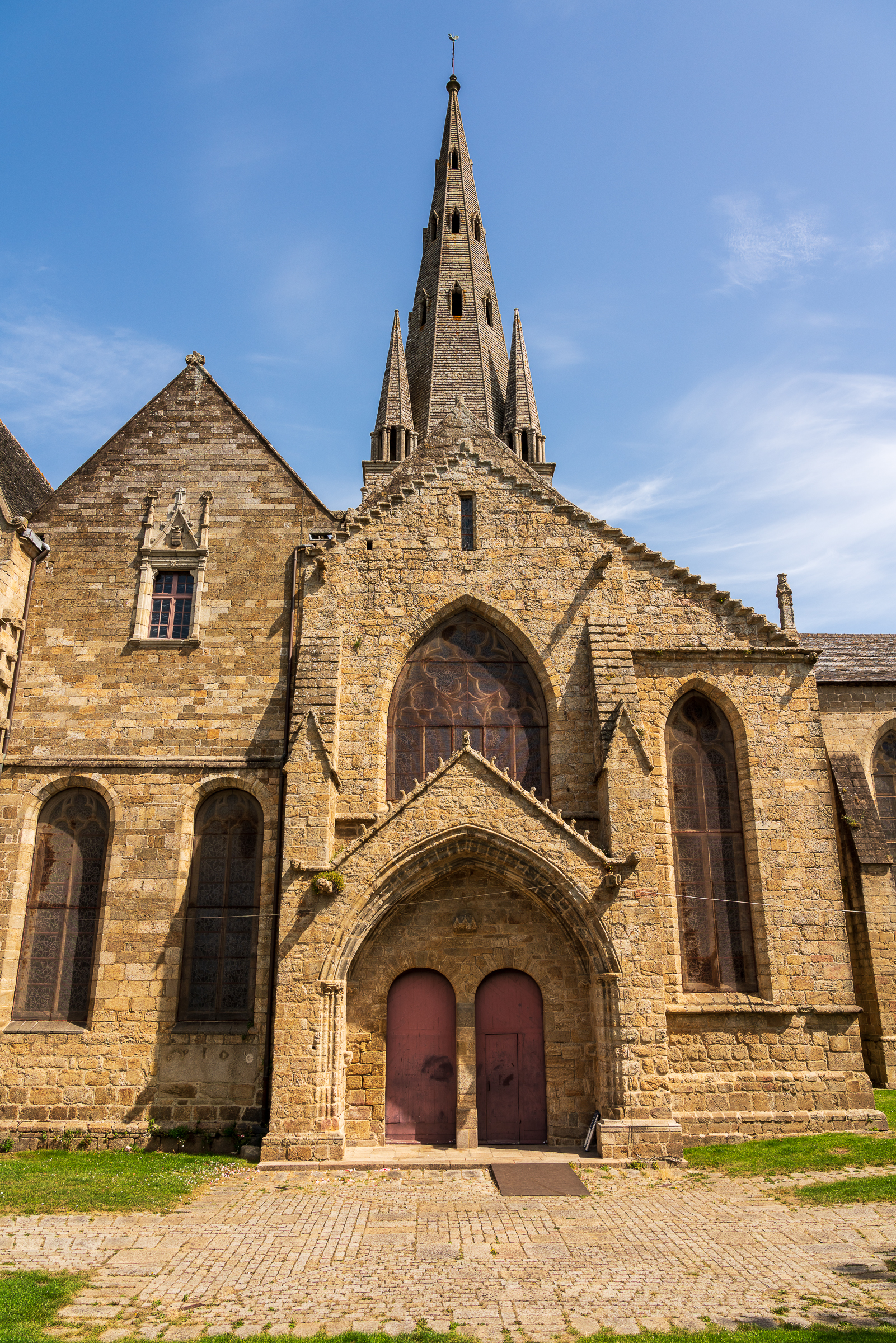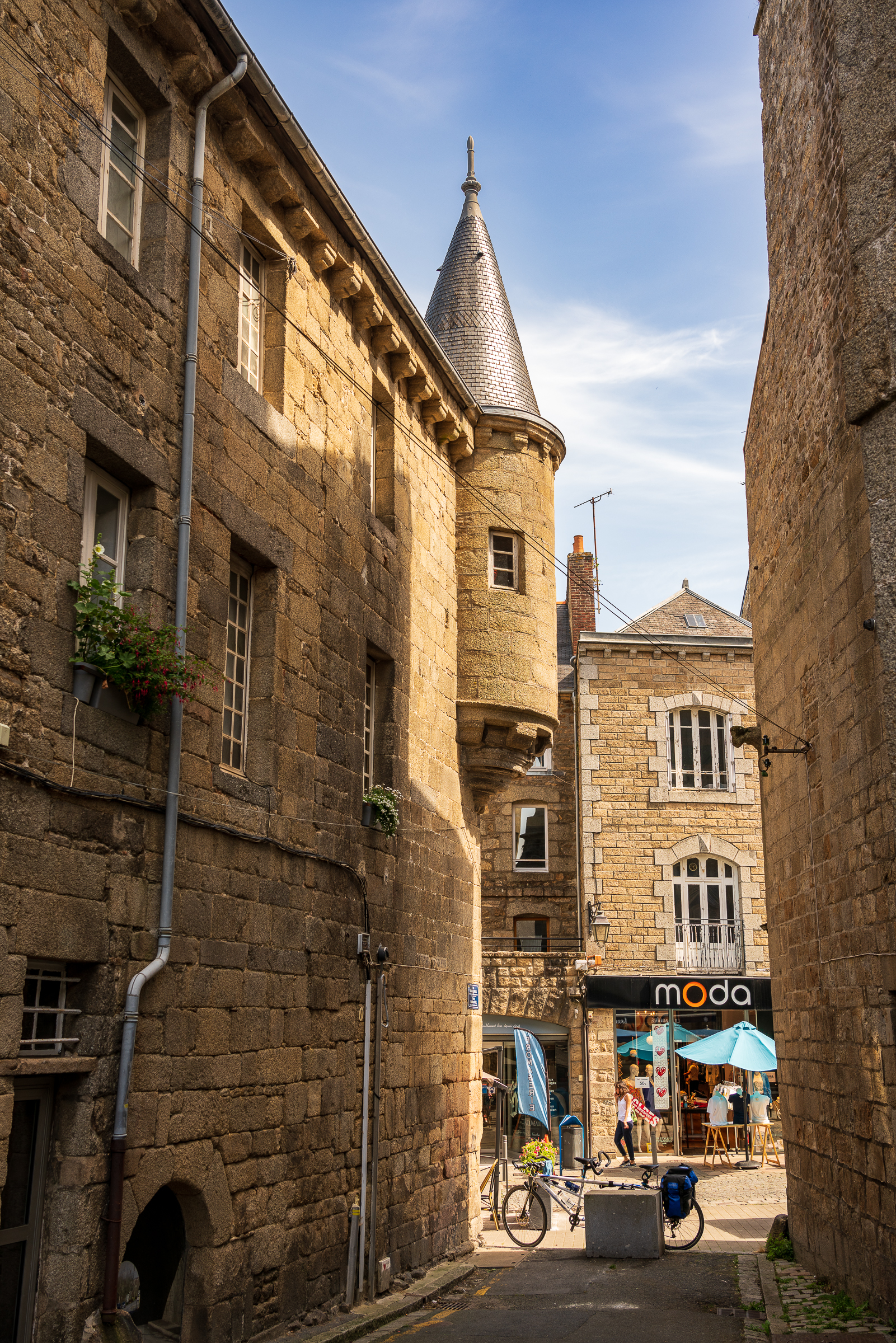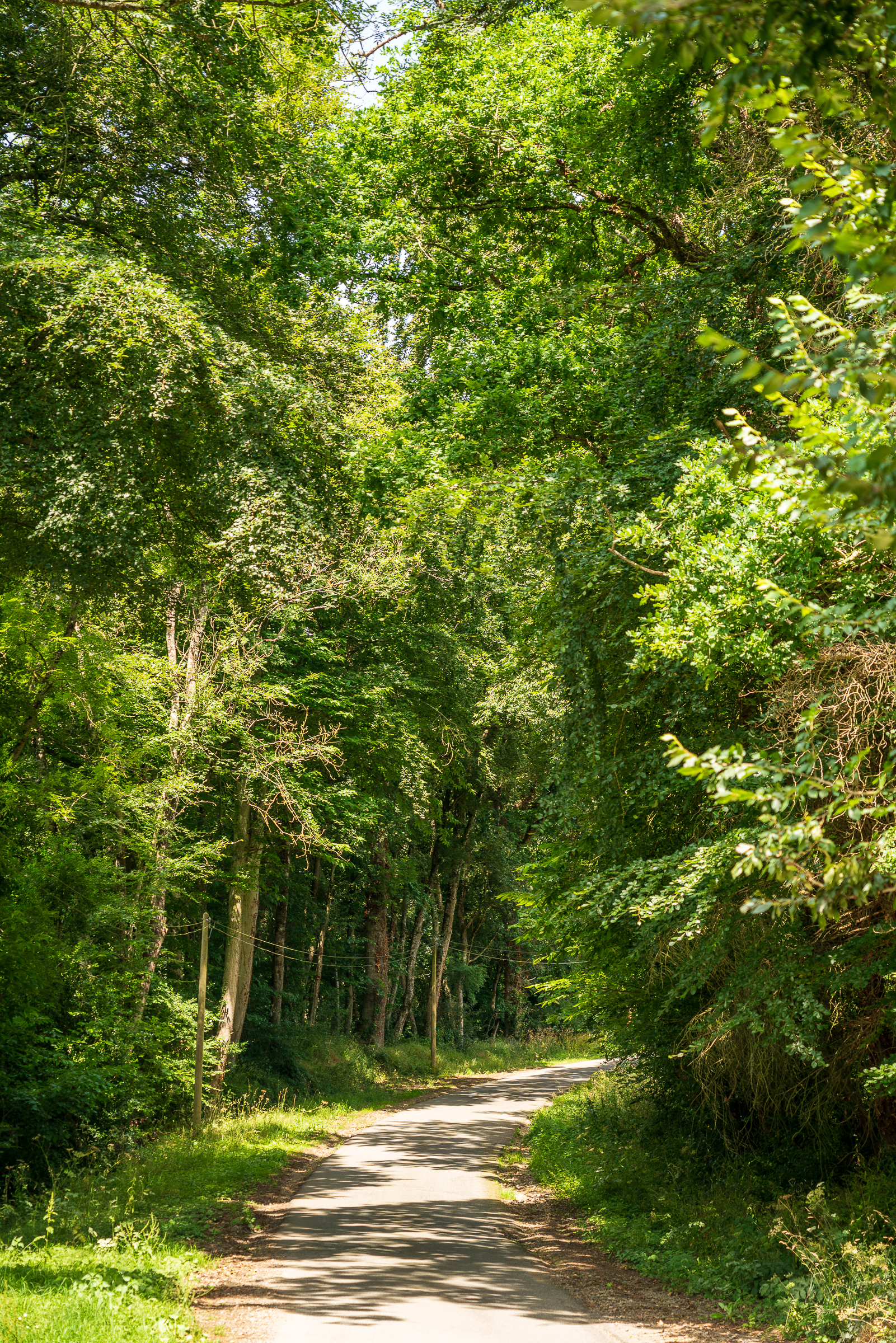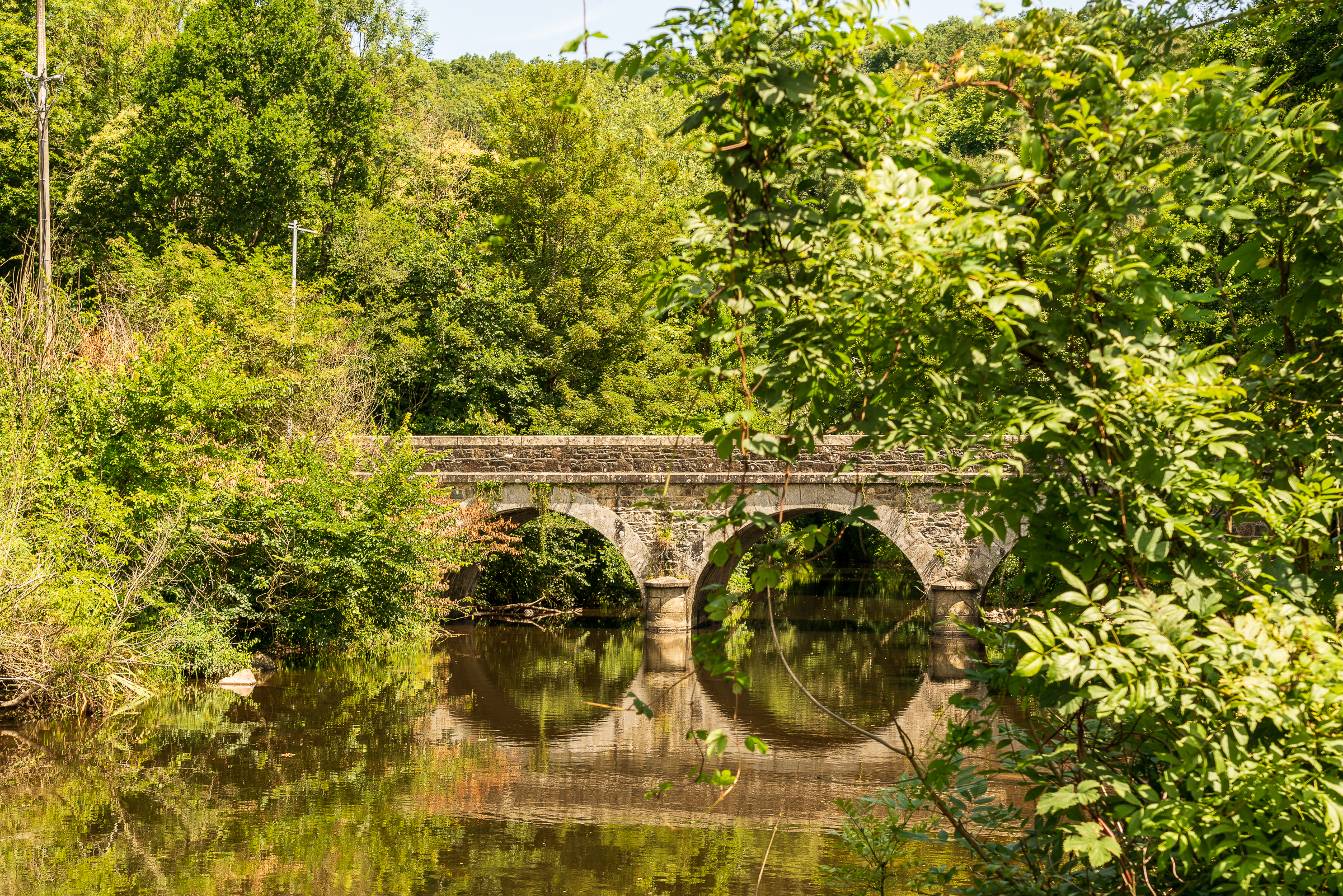I drove Suzie and her Dad to Guingamp this morning so they could catch a train to go to Paris. Her Dad is returning on Tuesday and they wanted to spend a few days in Paris before he left. Bad timing, though; it’s supposed to be over 90 degrees in Paris tomorrow and over 100 degrees both Monday and Tuesday, and the Airbnb they rented doesn’t have air conditioning (which is common). I hope they take care to stay hydrated and that they seek out cool spots.
After I dropped them off at the train station, I drove a few miles to the center of Guingamp and started walking around. Guingamp isn’t on the normal tourist path. It’s a small city of just over 7,000 people whose most recent claim to fame was having its pro soccer team winning its way into Ligue 1, and so playing against PSG, Lyon, Marseille, etc. It’s thought that the city was settled in the 800s or 900s, and evidence exists of a fortified chateau constructed during the 1000s. Its biggest economic drivers are agriculture, light industry, construction, and services. Basically it’s just an average city.
Yet I found it friendly and pretty. I stumbled first into the main plaza, where a market was taking place. I stopped and had a coffee while a kid looking to be about 12 years old played bagpipes (a Brittany thing for sure, I’ll spare you the audio).
The town is clean and well-kept, with flowers everywhere. I walked through the market and turned south.
The Trieux River runs through the middle of Guingamp. They have developed a series of walkways over the river downtown, giving pedestrians easy access, and affording nice views of the river and the Basilique Notre-Dame de Bon Secours.
You may remember the River Trieux from a post a few days back, when we found a lookout over the point where it enters the sea. From the picture below, you’d think it was a cousin to the Mississippi, but alas, it’s just a little pipsqueak, its large size below due to tides.

From the walkways I headed toward the Basilique. It’s an imposing building, surrounded closely by shops and houses, and so hard to capture in a photograph. But I tried.
The church is supposed to be quite interesting on the inside, but when I finally found the entrance and slowly opened it (I could hear singing and thought there was a mass going on), I found myself looking at a bride and a groom and spectators watching the marriage. I couldn’t look at the church while that was going on, so I exited and shut the door behind me.
By this time I was getting hungry. I walked back up the same street I’d come down, and found a boulangerie that served an excellent tuna sandwich (on a fresh, home-baked baguette) for 4 euros. With a Diet Coke that made lunch 5,60 euros. After lunch, I walked to the Hotel de Ville (city hall).
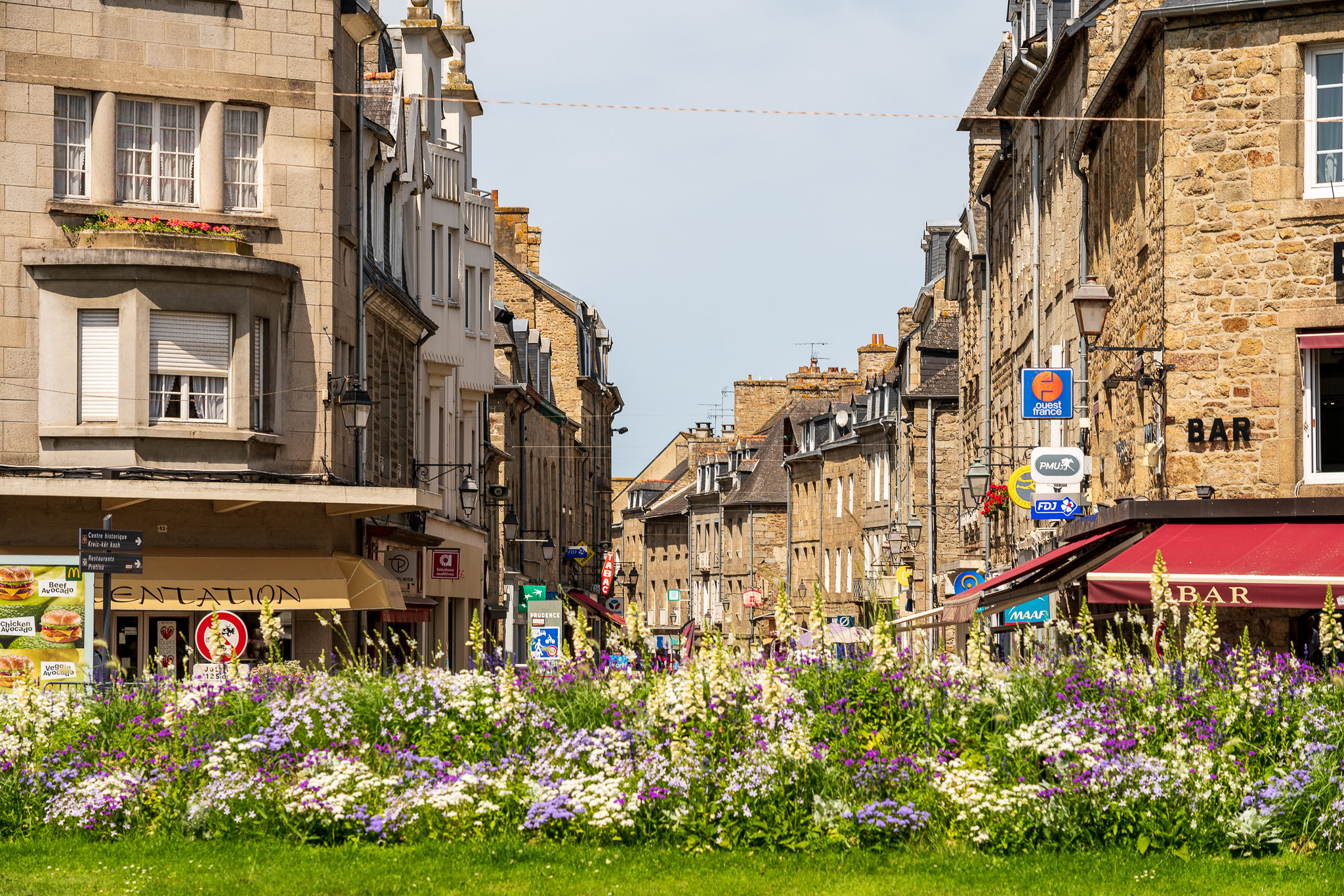
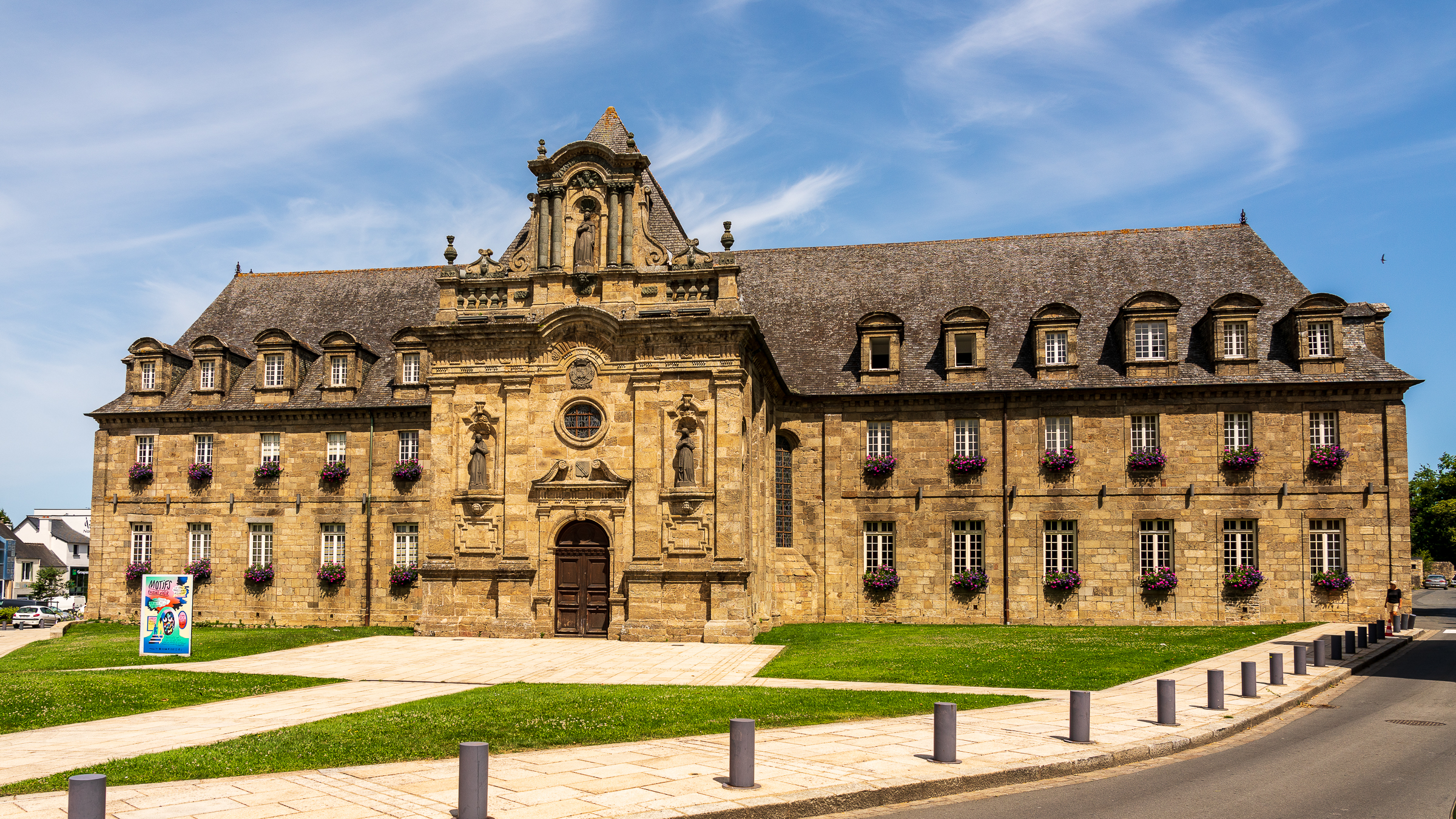
From there I went to the Jardin Publique, which was a bit of a disappointment (though it had a public toilet, hurray). On the way I passed a former prison that had been transformed into an art center. I don’t think I’ve ever seen a building more prison-y that this one — not even a window.
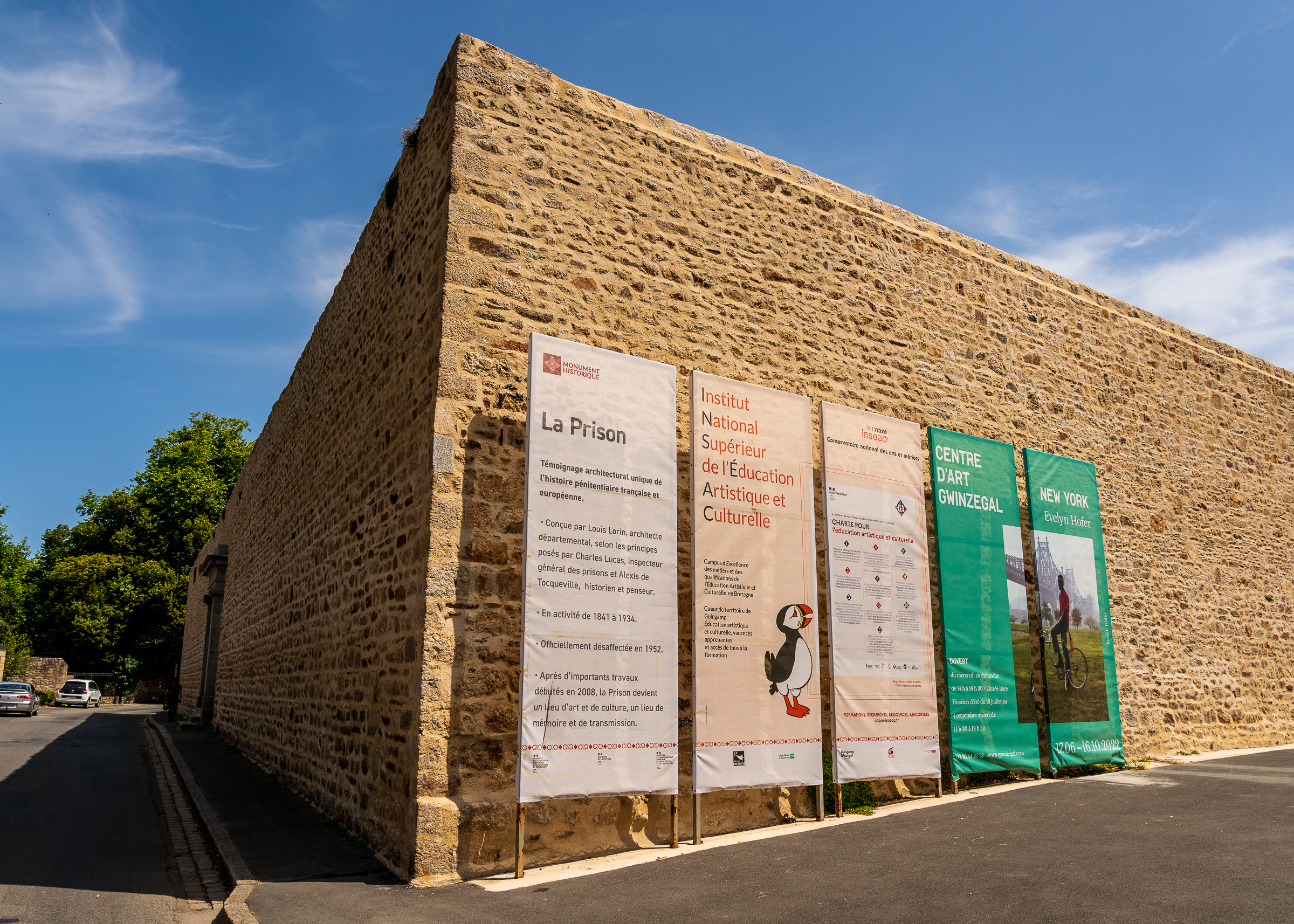
I was ready to hit the road after this, and rather than targeting something recommended by the Green Guide, I decided to return to Paimpol via small country roads, roughly paralleling the route of the Trieux to the sea.
This was an excellent decision. I grew up in the Midwest, with farmland all around, and the countryside here in Brittany reminds me of that (although Brittany is more forested in general). The main crops are corn and wheat, with field after field of both planted along the way. I wanted to get a good corn picture, which wasn’t easy because the roads I was on were narrow and didn’t have any turnoffs. I eventually turned onto an even smaller road and found a turnoff right between two cornfields. The picture I took was OK (it’s corn), but this guy didn’t like me in his neighborhood, and kept barking like I was going to steal something.

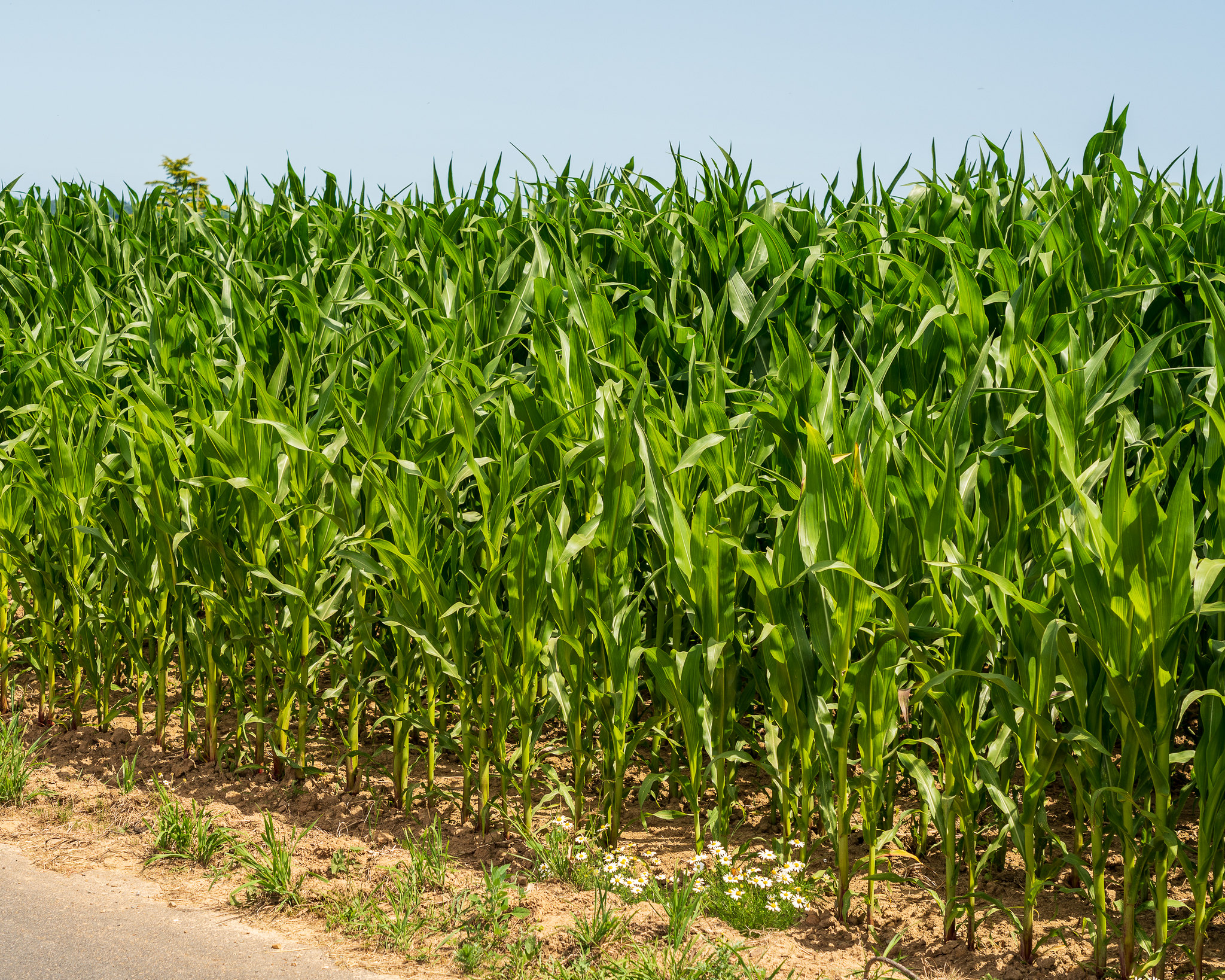
After this, on a whim, I took a detour in order to go across the Trieux. This took me down into a beautiful forested valley. Here are pictures I took in three different directions at an intersection halfway down to the river.
At the bottom of the valley, right next to the river, was a small picnic area. A family with kids was having a picnic at one end, I stayed at the other and took pictures of the river and the one-lane bridge going over it. The family all waved to me when I drove past them heading out, and I waved back.
It was time to hit the final stretch, but one last set of interesting photo targets awaited me in the very small village of Quemper-Guézennec. First, this:
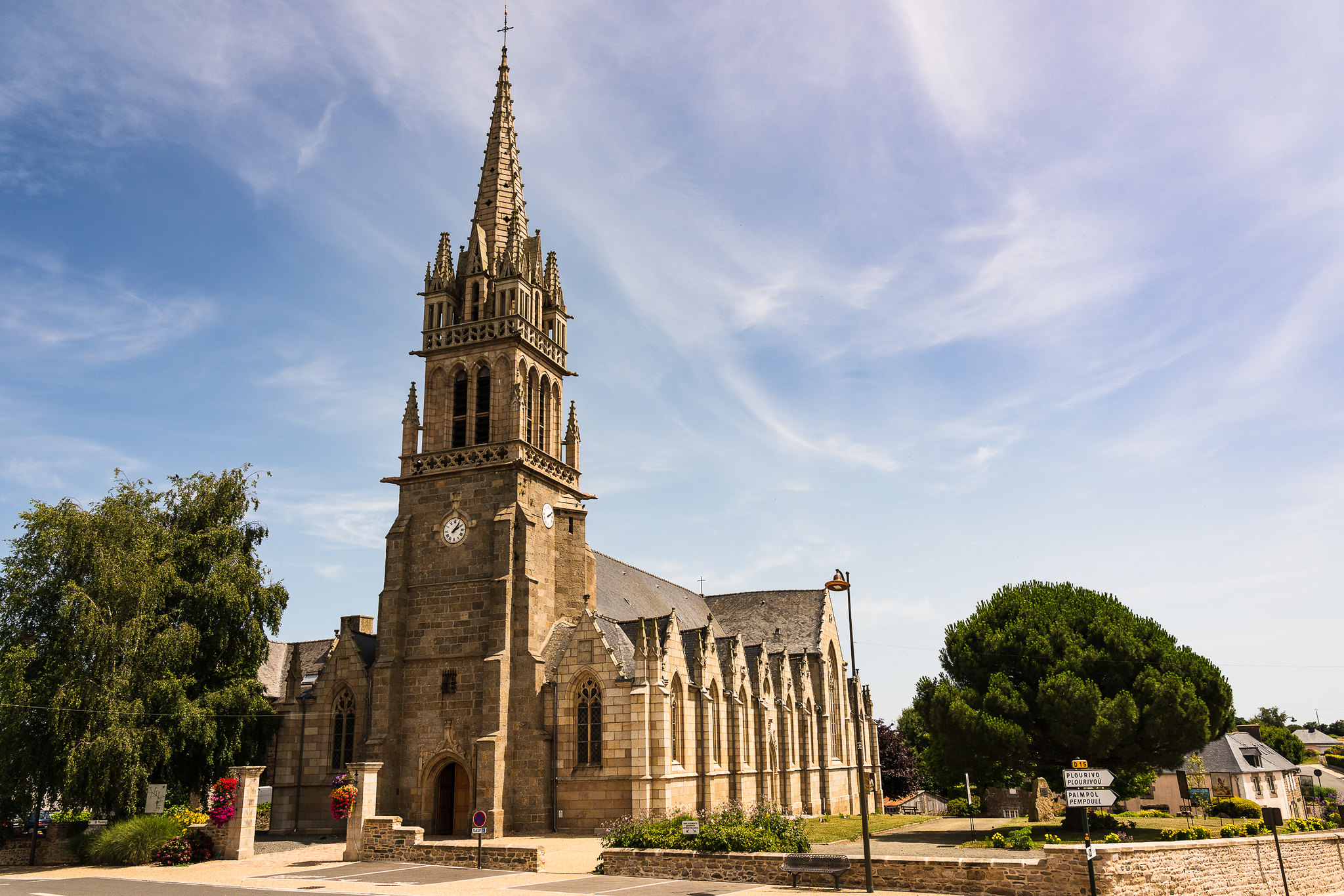
Then this (almost every village has a WWI memorial, but this was is very unusual):
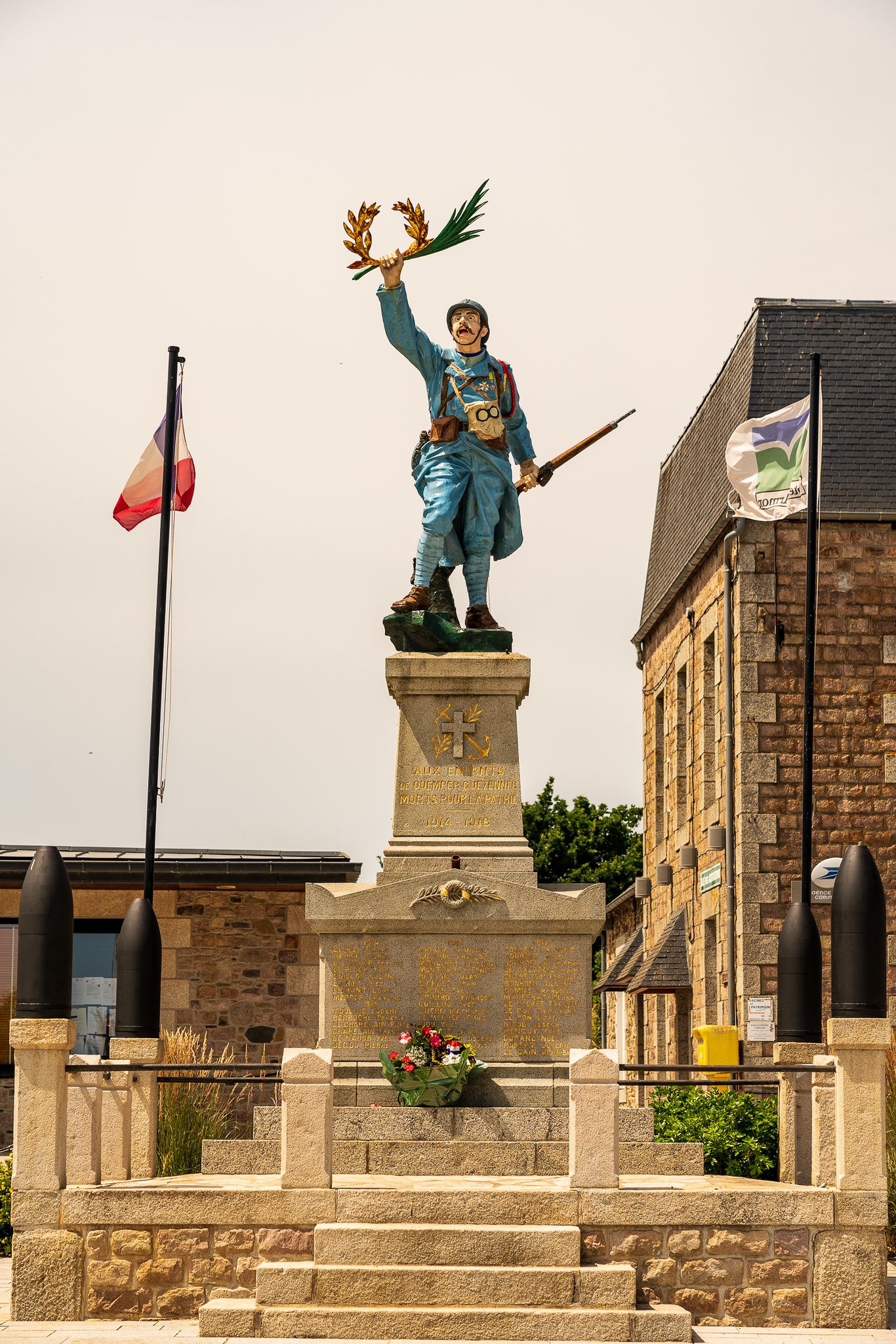
Then it was back to Paimpol, just follow the D15!
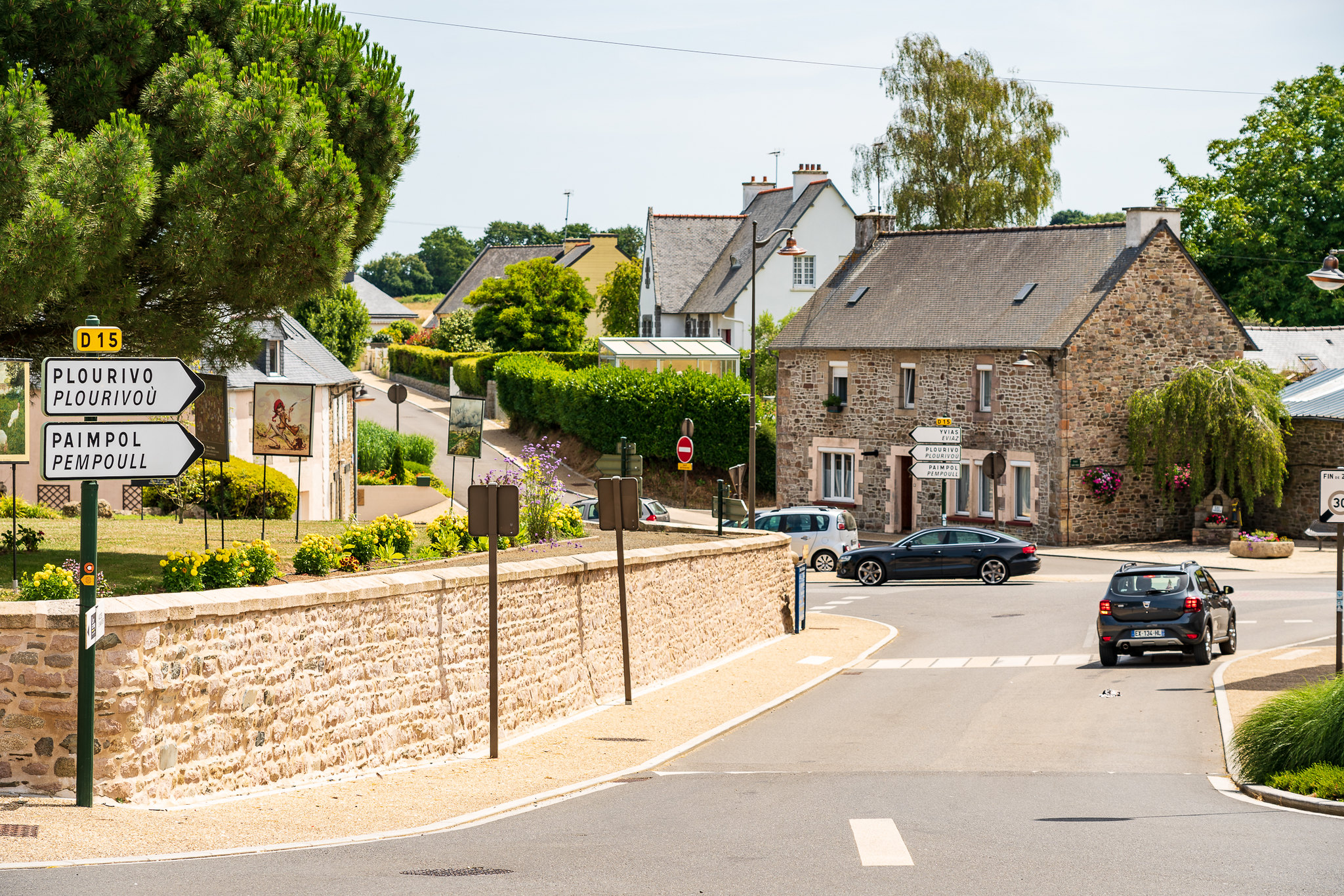
And that was my afternoon in Brittany without Suzie.
So what’s the point of this post? The point is that travel isn’t just about ticking off tourist sites, although there’s nothing wrong with that (especially if they are spots of natural beauty). Travel is also about getting to know the countryside, the people, getting a feel for a place in a way you can’t if you’re always in bustling tourist spots. Me, I love being in small towns, and out in the country. One of the reasons I love coming to France so much is that there is so much of that, and it is such an important part of the national culture, the national image. You know the saying, you can take the boy out of Iowa but you can’t take France out of the boy. Or something like that.
Categories: France, Travel -- France

